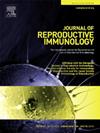A 2025-update of “historical evolution of ideas on eclampsia/preeclampsia’’ (2017, workshop reunion 2016)
IF 2.9
3区 医学
Q3 IMMUNOLOGY
引用次数: 0
Abstract
This paper updates the 2017 article, “Historical Evolution of Ideas on clampsia/Preeclampsia: A Proposed Optimistic View of Preeclampsia”, published in the Journal of Reproductive Immunology, incorporating advances in preeclampsia research from 2017 to 2025. Eclampsia, documented for over 5000 years, remains a critical challenge in maternal-fetal medicine. We outline the historical progression of understanding preeclampsia, from early observations of proteinuria and hypertension to modern molecular insights. Key advancements include recognizing preeclampsia as a systemic endothelial disorder, the primipaternity concept, and distinguishing early-onset (EOP) and late-onset (LOP) preeclampsia. A 2024 study reaffirms primipaternity as a major risk factor, resolving a 22-year debate over birth intervals. We explore inositol phosphoglycans P-type (IPG-P) as a specific biomarker, antiangiogenic factors like sFlt-1, and proteomic subclassifications identifying four molecular subtypes. Additionally, 75 % of fetal growth restriction (FGR, i.e. known pathological ultrasound Doppler) cases occur without maternal preeclampsia, suggesting an evolutionary protective mechanism. Despite progress, affordable treatments remain elusive, particularly for low-income countries. Targeting IPG-P, pravastatin, or ergothioneine, and leveraging proteomic insights, could lead to breakthroughs in preeclampsia prevention and treatment, potentially resolving related conditions like FGR and preterm birth.
“子痫/先兆子痫思想的历史演变”2025-更新(2017年,研讨会聚会2016年)
本文更新了2017年发表在《生殖免疫学杂志》(Journal of Reproductive Immunology)上的文章《关于子痫/先兆子痫的观点的历史演变:一种对子痫前期的乐观看法》,纳入了2017年至2025年子痫前期研究的进展。子痫,记录超过5000年,仍然是母胎医学的一个关键挑战。我们概述了了解先兆子痫的历史进展,从早期观察蛋白尿和高血压到现代分子的见解。关键的进展包括认识到先兆子痫是一种系统性内皮疾病,初产概念,以及区分早发性(EOP)和晚发性(LOP)先兆子痫。2024年的一项研究重申,初产是主要的风险因素,解决了22年来关于生育间隔的争论。我们研究了肌醇磷酸聚糖p型(IPG-P)作为一种特定的生物标志物,抗血管生成因子如sFlt-1,以及确定四种分子亚型的蛋白质组学亚分类。此外,75% %的胎儿生长受限(FGR,即已知的病理性超声多普勒)病例发生在没有母体子痫前期的情况下,这提示了一种进化保护机制。尽管取得了进展,但负担得起的治疗方法仍然难以实现,特别是对低收入国家而言。靶向IPG-P、普伐他汀或麦角硫因,并利用蛋白质组学的见解,可能会在子痫前期预防和治疗方面取得突破,潜在地解决FGR和早产等相关疾病。
本文章由计算机程序翻译,如有差异,请以英文原文为准。
求助全文
约1分钟内获得全文
求助全文
来源期刊
CiteScore
6.30
自引率
5.90%
发文量
162
审稿时长
10.6 weeks
期刊介绍:
Affiliated with the European Society of Reproductive Immunology and with the International Society for Immunology of Reproduction
The aim of the Journal of Reproductive Immunology is to provide the critical forum for the dissemination of results from high quality research in all aspects of experimental, animal and clinical reproductive immunobiology.
This encompasses normal and pathological processes of:
* Male and Female Reproductive Tracts
* Gametogenesis and Embryogenesis
* Implantation and Placental Development
* Gestation and Parturition
* Mammary Gland and Lactation.

 求助内容:
求助内容: 应助结果提醒方式:
应助结果提醒方式:


